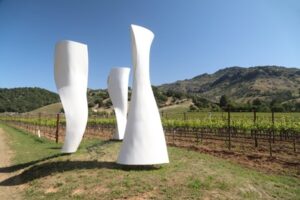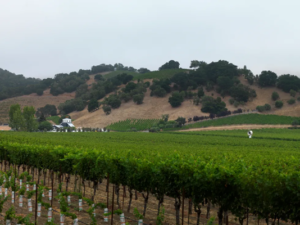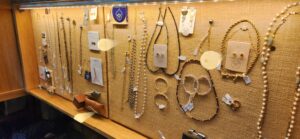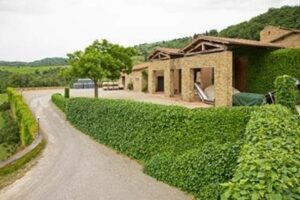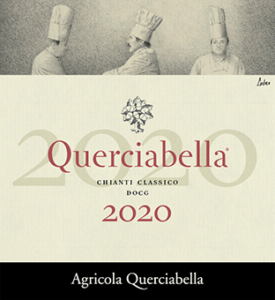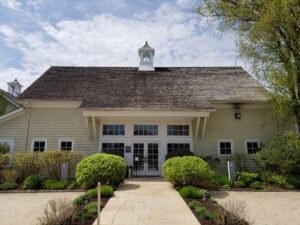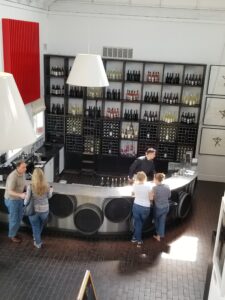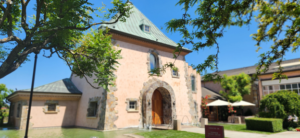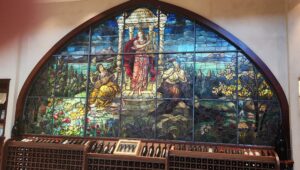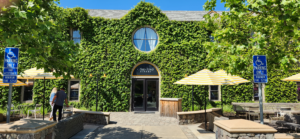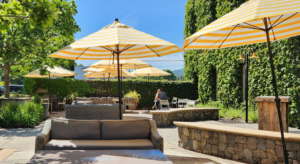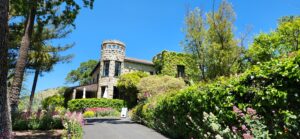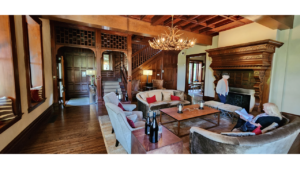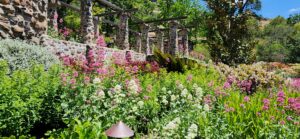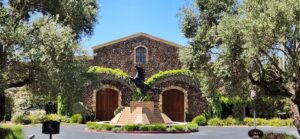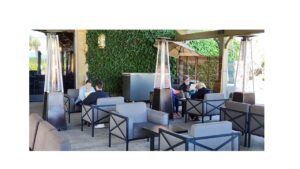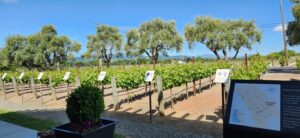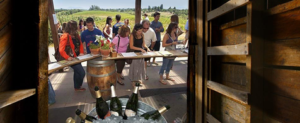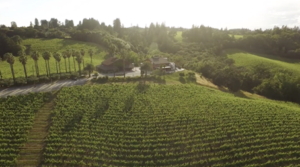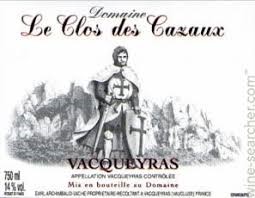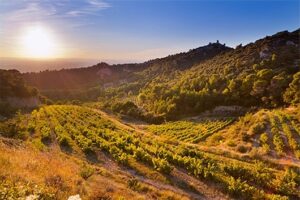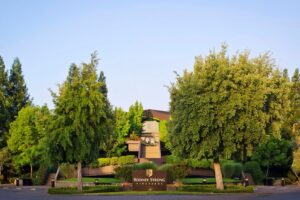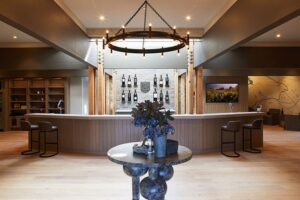It’s not usually important to know who the owners of a winery are before tasting there. Odette is unusual in that regard, in that it is owned by Gavin Newsom (yes, that Gavin Newsom), Gordon Getty (yes, those Gettys) and John Conover, who actually manages the winery. If the names Newsom and Getty sound familiar to wine lovers, that’s because they also founded the Plumpjack and Cade wineries, up on Napa’s Howell Mountain.
All this is relevant, because if you like Plumpjack and Cade, you’ll most likely enjoy the wines from Odette as well. We can say this because we were offered a comparison tasting of Cabernet Sauvignons from the three vineyards, and Odette certainly held its own.
Photo courtesy of The Napa Wine Project.
Note that none of the owners are named Odette, nor to our knowledge are their wives. The name of the winery is sort of an inside joke. Plumpjack was a nickname in some of Shakespeare’s plays for John Falstaff, the bibulous, rotund rake who nearly leads Henry V to ruin. His girlfriend was named Odette. On top of that, Odette is the romantic heroine in the ballet Swan Lake. And Odette Kahn was one of the judges in the famous Judgement of Paris wine tasting that established California’s winemaking prowess. This triple meaning is reinforced by modernistic sculptures in their vineyards, which is reproduced on their labels.
The Odette winery. Photo courtesy of 7×7.
For the visitor to Odette, there is no grand palace on the premises, just a rather simple white structure with an attractive steeple on top. The interior won’t blow anyone away, either. The greatest attraction is the sight of the winery in the midst of a seemingly endless vineyard, nestled below the hills in the Stags Leap sector. It harkens back to another era in Napa Valley, where the lure was the wine and the scenery, not the massiveness of the architecture. Visitors are meant to taste wines on a covered patio in view of the vines.
The wines on offer are primarily Napa Valley’s most common varietals: Chardonnay, Cabernet Sauvignon and Merlot. There’s also a less common Petite Sirah, which they market under the Adaptation label. These are all quite powerful wines, very much an expression of what Napa Valley is famous for. As mentioned, we were able to compare all three of their labels. In advance, we expected to prefer the wine made from mountain fruit, but Odette and Plumpjack, from the valley floor, proved to be our favorites.
Jewelry for sale at Odette.
We don’t often mention shopping in Power Tasting’s reviews, since most of what we find are either overpriced fashion items or the usual collection of refrigerator magnets and coasters, also overpriced. But Odette has a rather interesting display of handmade jewelry that is a notable exception to the rule and is worth mentioning. We’re sure that Falstaff’s girlfriend would be pleased to wear some of the pieces for sale.
We’re not certain that the wines from all three properties are offered all the time. Assuming that they are, a visit to Odette provides an interesting way to enjoy the wines of the Plumpjack group at one sitting.
